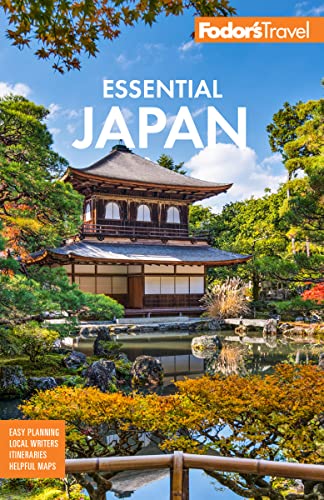Japan With Kids
Practicalities
At first glance, Japan might seem busy, bustling, and all business, but it’s actually a great destination to explore with kids. Transportation is quick and convenient, hotels and restaurants warmly accommodate children, and there is no shortage of attractions appealing to the younger set. Children in Japan even have their own public holiday (May 5, Children's Day), and allowing your kids to explore the world and experience new things is seen as the hallmark of good parenting.
Accommodations
Children who don’t need their own beds stay free at most Japanese hotels. At ryokan small children who need neither futons nor meals stay free. There are small extra charges for older children who need their own futon or a special children’s meal. Children's meals at some ryokan are kid-friendly feasts in themselves, and although adult meals are large enough to share, if you're traveling with little foodies it can be worth ordering special meals just for them.
Transportation
Children under six usually ride trains in Japan for free (though specifics vary by train company), and children 6–11 are half the adult fare. Japanese trains and station ticket gates are compact, so if you’re using a stroller, choose one that folds and can fit through train doors and ticket gates. Most bullet trains and express trains have diaper-changing facilities (おむつ交換台 omutsu kokan-dai); ask the conductor to show you where they are. All rental-car companies can provide rear- or front-facing car seats and booster seats, usually for around ¥1,000 per day. You can ride most public buses with strollers, as long as you use the designated stroller area (usually by the rear doors; look for a stroller logo).
Eating
Family restaurants in Japan will provide high chairs and booster seats, and Japanese-style restaurants usually have a tatami mat room with low tables that works well for families with small kids. Most restaurants in Japan welcome children and will provide small bowls and cutlery for kids to use. All family-style places have designated no-smoking sections, but many non–family restaurants allow smoking throughout the restaurant, so check in advance if this is a concern.
Health and Safety
Japan is safe, but crowded, and the country's urban crowds can be especially unnerving for kids. In case you're separated in a crowd, it's a good idea to have kids carry a bilingual card with your contact information, hotel information, and basic details such as their name and nationality. Remind kids that if anyone does get lost, they can ask for help at the nearest police box (交番、koban), which is usually close to the train station. Japanese clinics and hospitals offer high-quality care, and many doctors speak at least basic English. If you call or visit a Japanese medical facility, you'll be asked early and often about your child's temperature, so carry a small centigrade thermometer with you just in case.
Other Tips
Most Japanese department stores and shopping centers have “baby rooms” complete with diaper-changing facilities, private nursing areas, and hot water for infant formula. Some also have diaper vending machines, baby scales, and free stroller rentals.
In Kyoto
Though a full day touring Kyoto’s staid temples and shrines can tire out little ones pretty quickly, there are lots of kid-friendly sites in this traditional city. Of Kyoto’s traditional sites, Nijo Castle, with its lifelike mannequins reenacting life in this 17th-century shogun palace, is a good option for kids. The hundreds of vermillion gates at Fushimi Inari Shrine will also make an impression. Curious eaters will love the Nishiki Food Market. Kyoto is flat and its roads run in a grid pattern, making it a good spot for a family bike ride. Most bike-rental companies in Kyoto rent bikes with child seats, and some also offer electric-assist models to ease the strain of pedaling an extra passenger.
In Tokyo
In Tokyo popular sights for toddlers and school-aged children include Ueno Zoo, and Tokyo Disneyland. Shinjuku Gyoen Gardens or Yoyogi Park are popular family picnic spots. Good options in Tokyo to introduce kids to traditional culture include the Meiji Shrine in Harajuku or Senso-ji Temple in Asakusa. The hands-on "culture experience" programs run by the Yanesen Tourist Information Center are a great chance for older kids to try traditional drumming or take a swordsmanship lesson. Daredevils will enjoy a ride on the Thunder Dolphin, the roller coaster at Tokyo Dome that soars and loops around buildings. Kids must be eight or older and 51 inches or taller to ride. There are also gentler rides nearby for younger siblings.
In Osaka
Osakans love kids and are not shy about it, so traveling with kids in Osaka might involve conversation with friendly strangers. The Osaka Aquarium Kaiyukan is one of the world’s largest, and is the top kid-friendly attraction in the city. Osaka Castle and Osaka Castle Park are also great spots to take in the city’s history and enjoy a picnic. Near Osaka Station, the Hep Five Ferris Wheel offers good views of the city. The rides and attractions at Universal Studios Japan are also worth seeing.
Farther Afield
Although there are fewer English speakers in the Japanese countryside and smaller cities, a slower pace and fewer crowds make traveling in rural areas with kids a relaxing proposition. Kid-friendly attractions in rural Japan include the Asahiyama Zoo, Japan’s most-visited, in Hokkaido’s Asahikawa City (90 minutes from Sapporo).




